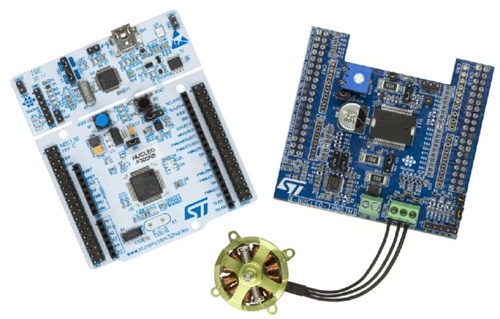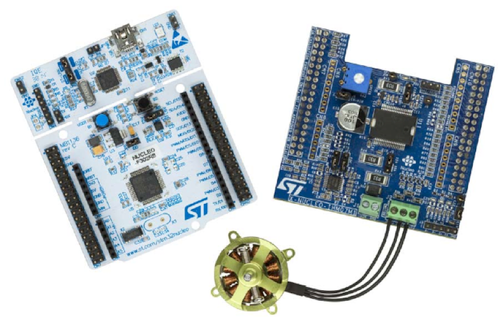December 1, 2015

In my recent Design News Continuing Education Center (CEC) online course, sponsored by Digi-Key, Controlling Sensors Efficiently with MCUs, I described how sensors will be the eyes and ears of the Internet of Things (IoT), collecting data on the environment and relaying it to the cloud, where will be aggregated, analyzed, and used to make intelligent decisions. Most of these decisions will result in some action made to the environment, where it is an adjustment to power level, light level, temperature, or pressure -- which are often the very things measured by sensors.
Usually these adjustments require some electromechanical element. Perhaps window blinds will be adjusted to control passive solar heating or vents will be opened or closed to adjust air flow. Pressure and temperature changes may also require moving valves or pistons. The common denominator in just about every electromechanical system is the use of a motor. If sensors will be the eyes and ears of the IoT, motors will be the arms and legs.
Motor control algorithms have changed considerably from just a few years ago. Now motors use complex transforms and position-sensing algorithms to dramatically improve efficiency, reduce wear, and manage torque during "spin up" and "spin down." These algorithms can require significant computational capabilities, and fortunately microcontrollers have gained significant computing power to keep up with these new demands.
I discussed much of the theory and some example applications in my previous Design News CEC course on motor control. One of the types of motors that is benefitting from complex control algorithms being hosted on modern MCUs is the AC induction motor, originally developed by Nikola Tesla (Figure 1). Many of the concepts on which modern motor control algorithms are based are best understood through hands-on work with actual hardware.

In my next motor control CEC course, Hands-On Acceleration of MCU-Based Motor Control Design, Dec. 14-18, I will use the STMicroelectronics STM32 P-Nucleo-IHM001 motor control kit so that attendees can follow along and look at the algorithms executing on their own desktops. The kit, shown Figure 2, includes an MCU board, a motor control board, and a small motor.

The kit's free software allows implementation of some complex algorithms, like field-oriented control (FOC), which uses on-chip floating-point and advanced pulse-width modulation timers, for generating the timing signals needed to control the motor. A hand-on workshop is included as part of the STMicro kit documentation, and I will be using this as one of the key elements of the weeklong course.
READ MORE ARTICLES BY WARRNE MILLER ON DESIGN NEWS:
If you are interested in learning how to use the arms and legs of the IoT to control your environment, sign up for my upcoming CEC course, purchase the low-cost motor control kit at Digi-Key, and get ready to power up your IoT applications.
Warren Miller has more than 30 years of experience in electronics and has held a variety of positions in engineering, applications, strategic marketing, and product planning with large electronics companies like Advanced Micro Devices, Actel, and Avnet, as well as with a variety of smaller startups. He has in-depth experience of programmable devices (PLDs, FPGAs, MCUs, and ASICs) in industrial, networking, and consumer applications and holds several device patents.
Like reading Design News? Then have our content delivered to your inbox every day by registering with DesignNews.com and signing up for Design News Daily plus our other e-newsletters. Register here!

Design engineers and professionals, the West Coast's most important design, innovation, and manufacturing event, Pacific Design & Manufacturing, is taking place in Anaheim, Feb. 9-11, 2016. A Design News event, Pacific Design & Manufacturing is your chance to meet qualified suppliers, get hands-on access to the latest technologies, be informed from a world-class conference program, and expand your network. (You might even meet a Design News editor.) Learn more about Pacific Design & Manufacturing here.
About the Author(s)
You May Also Like



